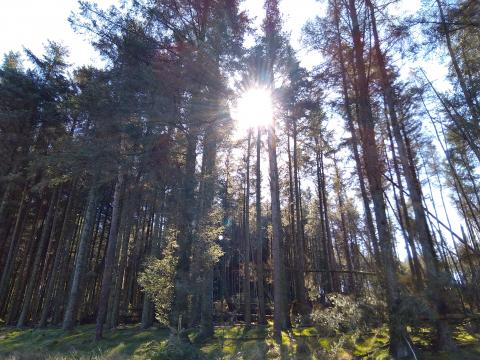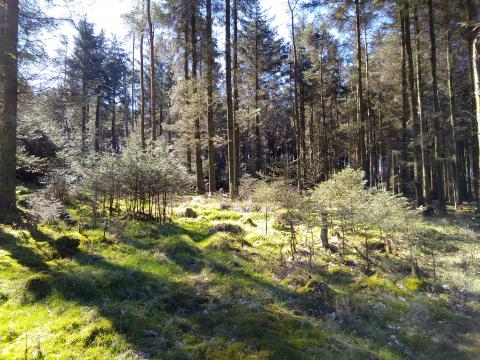Dying Saints, Lighter Glades

On the moors over Earby sits an extensive coniferous plantation. The trees are tall and thin, packed close together, perhaps for a greater commercial return for him who planted. Beneath them is very little life, just heaps of fallen, brown pine needles. Yet occasionally, one sees little glades between the trunks, where some older trees have fallen. Additional light had been admitted, and numerous saplings grow in the newly created space. Without the older trees falling and rotting away, the younger generation would never come through. Of course this is a man-made woodland; all shall one day be felled, and then replanted. But in a natural forest, new plants would depend on the deaths of the older.
I do wrestle with why God allows His people to die, usually when I’m feeling melancholic and wistful, remembering departed Christian friends. Yet death is another of God’s gracious and providential means of blessing. I could never have pastored Martin Top except my immediate predecessor retired, and his predecessors retired or died. Imagine if Adam Bray and George Partington, our first pastors, were still here. Had they been given some patriarchal lifespan, there is no way they would have allowed some whipper-snapper like me to darken the pulpit. You see, most of our chapel’s pastors are physically dead and inhabiting heaven. Same with our secretaries, treasurers, pianists, cleaners, pray-ers. You name it, we have more dead ones than living ones (I suspect operators of sound desks and video cameras may be an exception). So the Lord calls His people home to allow new generations the privilege of serving Him below. May we rise to the challenge.
I beseech you therefore, brethren, by the mercies of God, that ye present your bodies a living sacrifice, holy, acceptable unto God, which is your reasonable service. (Romans 12:1)

- Log in to post comments


 Sunday Worship 10.45am & 6.00pm
Sunday Worship 10.45am & 6.00pm